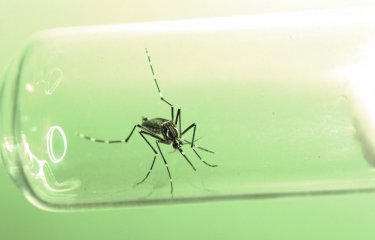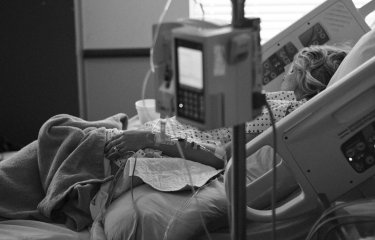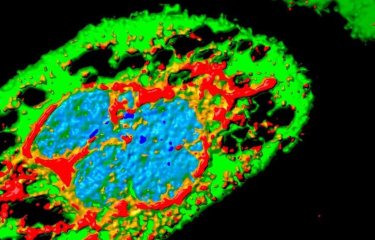Thanks to a study conducted in pregnant women and their unborn children during the Zika epidemic in the French territories in the Americas, researchers from Inserm, Institut Pasteur and the University Hospital of Guadeloupe have been able to accurately estimate the risk of severe neurological complications in babies. They have also determined that the first trimester of pregnancy is the period which presents the highest risk. While the overall risk is 7%, this rises to 12.7% – i.e. more than 1 in 10 children – if infection occurs during the first 3 months of pregnancy. This research has been published in the New England Journal of Medicine (NEJM).
In February 2016, faced with a drastic increase in the number of Zika infections and in order to establish a link between the virus and neurological complications, the World Health Organization (WHO) declared a "Public Health Emergency of International Concern (PHEIC)". In March 2016, with the aid of the REACting consortium, Inserm took charge of the establishment, sponsorship and scientific follow-up of a cohort of pregnant women exposed to Zika in the French territories in the Americas, monitored by the French Antilles-French Guiana Clinical Investigation Center (Inserm CIC 1424). The objective? To study the fetal and neonatal complications associated with Zika virus infection in an epidemic situation. This cohort was funded by the French Ministry of Health and Solidarity (Exceptional Support of Research and Innovation) and included in the European ZIKAlliance1program.
Several thousand women who were pregnant during the Zika epidemic in the French territories in the Americas were enrolled in this cohort between March 2016 and August 2017. The article published in NEJM addresses those women from the cohort who presented with Zika virus infection confirmed by laboratory testing between March 2016 and November 2016. These women were then monitored every month until the end of their pregnancy. All complications and treatments received were recorded and if fetal abnormality was detected during an ultrasound, an additional examination by magnetic resonance imaging was performed.
The results obtained by the researchers show a 7 % rate of congenital neurological abnormalities observed in the fetuses and neonates of the cohort, which is a lot lower than that initially observed in Brazil, and close to what was observed in the US registry.
The study confirms an especially high risk in the event of infection occurring during the first trimester.
When broken down, the results show that the frequency of neurological complications is:
- -12.7% when the mother is infected during the 1st trimester
- 3.6% when the mother is infected during the 2nd trimester
- 5.3% when the mother is infected during the 3rd trimester
Likewise, the percentage of severe microcephaly (head circumference < -3SD) is 1.6% overall, and:
- 3.7% when the mother is infected during the 1st trimester
- 0.8% when the mother is infected during the 2nd trimester
- 0 when the mother is infected during the 3rd trimester
"These are the initial findings of the analyses of this cohort, given that the babies are still very young. It will be essential to monitor all the children in order to identify any later complications," explains Bruno Hoen, physician researcher at Inserm and University Hospital of Guadeloupe and principal investigator of the study.

Even if these complication rates are low in relation to other viral infections in pregnant women, they remain worrying given that the Zika virus can infect over 50 % of a given population in the epidemic phase
Arnaud FontanetHead of the Emerging Diseases Epidemiology Unit at Institut Pasteur, and who is co-investigator of the study.
|
REACTing (REsearch and ACTion targeting emerging infectious diseases) Inserm and its Aviesan partners have created REACTing, a multidisciplinary consortium that brings together research groups and laboratories of excellence, in order to prepare for and coordinate research to combat the health crises linked to emerging infectious diseases. Since its creation, REACTing has also set up programs centered around the Chikungunya, Ebola and Zika epidemics. Clinical research at Inserm The Clinical Research Unit manages sponsor activities for the clinical trials of which Inserm is a sponsor and, together with the Directorate of Health Care Supply (DGOS), jointly supervises the Clinical Investigation Centers (CIC). In 2017, he was in charge of 238 studies, including 15 European and/or international projects. |
1ZIKAlliance is a 3-year project funded by the European Union’s Horizon 2020 Research and Innovation Programme under Grant Agreement No. 734548.
Sources
Pregnancy Outcomes after ZIKV Infection in FrenchTerritories in the Americas
Bruno Hoen, M.D., Ph.D., Bruno Schaub, M.D., Anna L. Funk, M.Sc.,Vanessa Ardillon, M.D., Manon Boullard, M.Sc., André Cabié, M.D., Ph.D.,Caroline Callier, M.Sc., Gabriel Carles, M.D., Sylvie Cassadou, M.D.,Raymond Césaire, M.D., Ph.D., Maylis Douine, M.D., Ph.D.,Cécile Herrmann-Storck, M.D., Philippe Kadhel, M.D., Ph.D.,Cédric Laouénan, M.D., Ph.D., Yoann Madec, Ph.D., Alice Monthieux, M.D.,Mathieu Nacher, M.D., Ph.D., Fatiha Najioullah, Ph.D.,Dominique Rousset, M.D., Ph.D., Catherine Ryan, M.D.,Kinda Schepers, M.D., Ph.D., Sofia Stegmann-Planchard, M.D., M.P.H., Benoît Tressières, M.Sc., Jean-Luc Voluménie, M.D., Samson Yassinguezo, M.D., Eustase Janky, M.D., Ph.D., and Arnaud Fontanet, M.D., Dr.P.H.
The authors’ affiliations are as follows: From INSERM Centre d’Investigation Clinique 1424 (B.H.,C.C., B.T.), Service de Maladies Infectieuses et Tropicales, Dermatologie, Médecine Interne (B.H.,K.S.), Cellule d’Intervention en Région (CIRE) Antilles, Santé Publique France (S.C.), Laboratoire de Microbiologie (C.H.-S.), Service de Gynécologie Obstétrique (P.K.), Centre Pluridisciplinaire de Diagnostic Prénatal (C.R.), and Pôle Parent-Enfant (E.J.); Centre Hospitalier Universitaire (CHU) de Pointe à Pitre/Abymes, and Université des Antilles et de la Guyane, Faculté de Médecine Hyacinthe Bastaraud (B.H.), Pointe-à-Pitre, Guadeloupe; Centre Pluridisciplinaire de Diagnostic Prénatal, Maison de la Femme de la Mère et de l’Enfant (B.S.), INSERM Centre d’Investigation Clinique (M.B.,A.C.), Centre de Ressources Biologiques (R.C.), Unit of Obstetrics and Gynecology, Maison de la Femme de la Mère et de l’Enfant (A.M., J.-L.V.), and Laboratoire de Virologie (F.N.), CHU Martinique, Fort-de-France, Martinique; the Emerging Diseases Epidemiology Unit (A.L.F., Y.M.,A.F.) and Center for Global Health (A.F.), Institut Pasteur, INSERM, IAME (Infection, Antimicrobials,Modeling, Evolution), Paris Diderot University (C.L.), and Conservatoire National des Arts etMétiers, Unité Pasteur-Cnam Risques Infectieux et Émergents (A.F.), Paris; CIRE de Guyane, Santé publique France (V.A.), Pôle Mère-Enfant, Centre Hospitalier de l’Ouest Guyanais (G.C.), INSERM Centre d’Investigation Clinique 1424 (M.D., M.N.), Laboratoire de Virologie, Institut Pasteur de laGuyane (D.R.), and Service de Gynécologie Obstétrique, Centre Hospitalier de Cayenne (S.Y.), French Guiana; and Unité de Maladies Infectieuses, Centre Hospitalier Louis Constant Fleming, St. Martin (S.S.-P.) — all in France.
New England Journal of medicine https://dx.doi.org/10.1056/NEJMoa1709481





